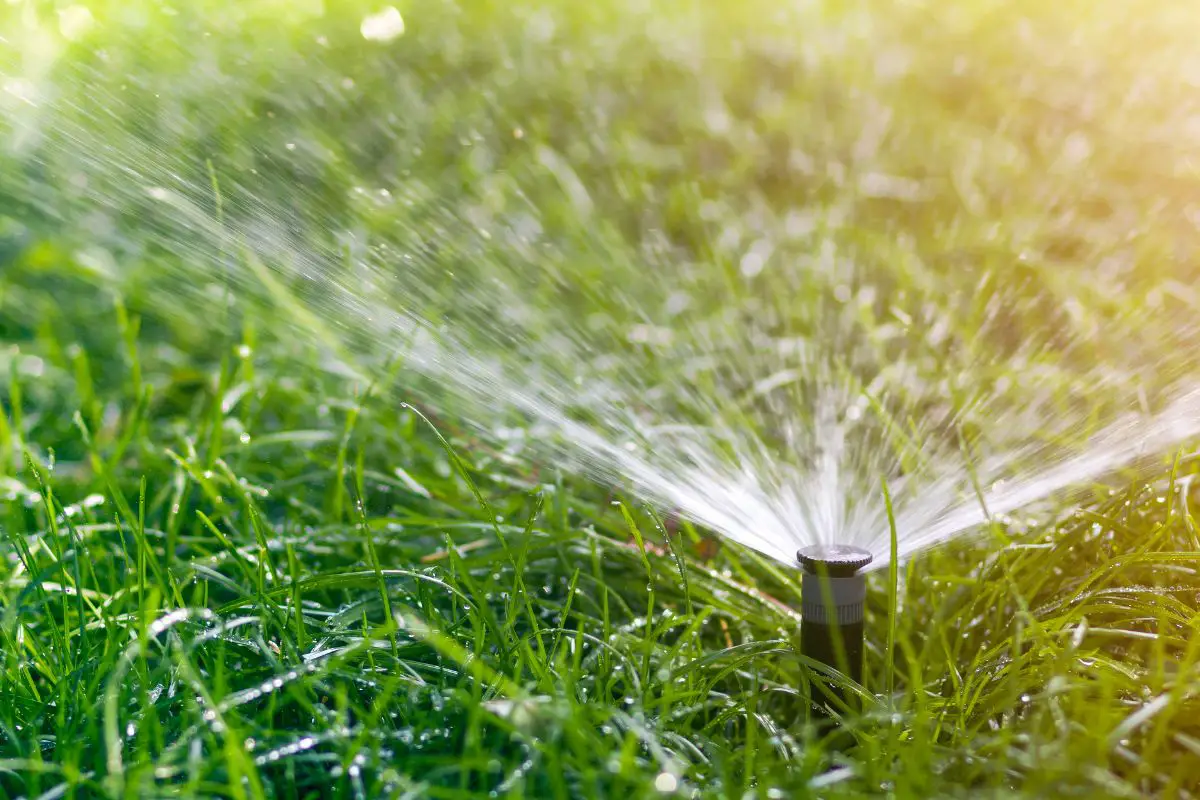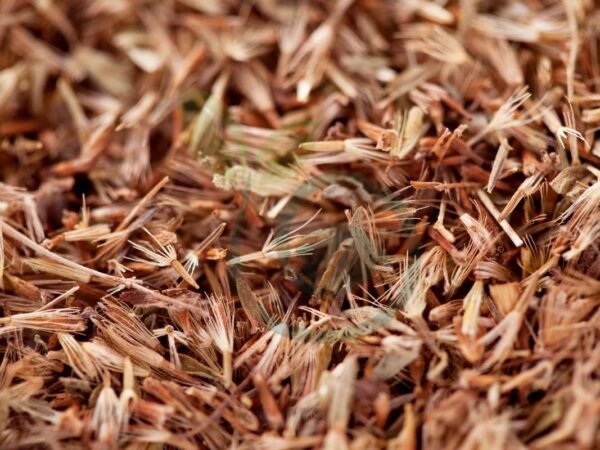
Ever wondered if achieving a lush, green lawn through spring planting could be as simple as sprinkling grass seed? The idea of effortlessly transforming your yard with just a sprinkle might sound appealing. But is it really that easy? Let's delve into the reality of whether you can achieve a thriving lawn by merely scattering grass seed on the ground.
Key Takeaways
- Proper lawn preparation is crucial before sprinkling grass seed on your lawn to ensure successful growth.
- Regular maintenance after seeding, such as watering and fertilizing, is essential for the health of the new grass.
- Understanding the local climate and its impact on grass growth can help you choose the right type of grass seed for your lawn.
- Assessing your lawn usage patterns will allow you to select grass seed that can withstand the level of foot traffic it receives.
- Consistent and effective watering practices are key to promoting healthy grass growth after seeding.
- If you encounter growth issues, refer back to the troubleshooting section for solutions tailored to common problems.
Grass Seed Basics
Understanding Types
Grass seed, including turfgrass seeds, comes in various types such as cool-season grass and warm-season grass. Each type has distinct characteristics. For instance, cool-season grasses thrive in cooler climates, while warm-season grasses prefer warmer temperatures. Understanding these differences is crucial for selecting the right seed for your lawn.
When choosing a grass seed, consider factors like sunlight exposure, soil composition, and water availability. Different types of grass seeds have specific requirements that must align with your lawn's conditions to ensure successful growth when planting in yard areas. Some common grass seed blends include a mix of fescue, bluegrass, and ryegrass tailored for different needs such as shade tolerance or drought resistance.
To determine the best time to plant grass seed, consider the optimal planting window based on your region's climate. Cool-season grasses are typically planted in early fall or early spring when temperatures are moderate for germination and growth. On the other hand, warm-season grasses thrive when planted in late spring to early summer when soil temperatures are warmer.
Selecting Right Seed
Before sprinkling any random grass seeds on your lawn, assess factors like climate suitability and soil conditions to make an informed choice. Opt for a blend that matches your region's climate patterns to ensure long-term success with minimal maintenance.
Look for specialized features in certain varieties of grass seeds, such as enhanced disease resistance or improved drought tolerance. These attributes can significantly impact the overall health and appearance of your lawn over time by reducing maintenance requirements and promoting lush growth.
Plan ahead by considering seasonal variations, sun, and repair before planting new grass seed on your lawn. Timing is crucial; planting during the optimal season ensures that the seeds have enough time to establish roots before facing harsh weather conditions or extreme temperatures that could hinder their growth potential.
Lawn Preparation Techniques
Soil Evaluation
Testing the soil pH and nutrient levels is crucial before spreading grass seed. Address any deficiencies for healthy growth. Adequately prepare the soil to ensure optimal conditions for germination.
Aeration Tips
Understanding the significance of lawn aeration is vital for successful grass seed growth. Different techniques offer various benefits. Maintain a proper aeration schedule to keep your lawn in top condition.
Sunlight Analysis
Evaluate the sunlight exposure in your lawn area to determine where grass seed will thrive best. Consider shade tolerance when choosing grass types. Plan planting locations based on sunlight availability for optimal growth.
Seeding Process Explained
Sprinkling Techniques
To ensure even distribution of grass seed, consider broadcast seeding or spot seeding based on your lawn's needs. Determine the most suitable technique for your lawn size and shape to achieve optimal results.
Spot seeding involves targeting specific areas with sparse grass growth, while broadcast seeding covers large areas uniformly. Choose wisely based on the condition of your lawn for effective results.
Covering Seed
After planting grass seed, covering it is crucial to protect it from birds, wind, and harsh sunlight. Mulch or straw can provide adequate coverage while allowing air and moisture to reach the seeds for germination. Ensure thorough coverage for successful growth.
Pros:
- Protects seeds from external elements
- Promotes moisture retention
Cons:
- May require additional cost
- Needs regular monitoring for maintenance
Watering Practices
Maintaining proper soil moisture levels is essential post-seeding. Establish a watering routine that keeps the seed moist without saturating the soil. Utilize sprinklers or an irrigation system for consistent watering patterns across the lawn.
- Monitor soil moisture regularly.
- Adjust watering practices based on soil conditions.
- Avoid overwatering to prevent seed rotting.
Overseeding Guide
Lawn Revitalization
Revive a struggling lawn by implementing strategies with new grass seed. Identify specific areas that require revitalization and focus on targeted seeding in those spots. Ensure success by following a comprehensive lawn care plan.
For successful lawn revitalization, it's crucial to assess the condition of your lawn and determine the areas that need improvement. By focusing on targeted seeding, you can effectively address patchy or bare areas, promoting healthy grass growth throughout your lawn. Incorporating proper watering and maintenance practices into your lawn care routine will further enhance the results of overseeding.
Seed Selection
When selecting grass seed for overseeding, consider essential factors such as drought resistance and maintenance requirements. Opt for grass seed varieties that are well-suited to your specific climate conditions and soil type. Comparing different seed options will help you find the most suitable choice for rejuvenating your lawn.
Choosing the right type of grass seed is crucial for achieving successful overseeding results. Look for varieties that offer drought tolerance to ensure your lawn remains healthy during dry periods. Considering maintenance requirements can help you select a grass seed variety that aligns with your preferred level of upkeep. By comparing various seed options based on their characteristics and benefits, you can make an informed decision that will promote lush and vibrant growth in your lawn.
Maintenance After Seeding
Watering Schedule
Establish a watering schedule that aligns with the needs of the newly planted grass seed. Monitor and adjust watering based on weather conditions and growth stages. Utilize rain gauges to track rainfall and supplement irrigation when necessary.
Incorporate tools like rain gauges to accurately measure precipitation levels. This ensures that the grass seed receives sufficient moisture for optimal growth. Adjust your watering frequency accordingly, preventing under or over-watering issues.
Growth Care
Provide essential care to nurture healthy grass seed development post-seeding. Regularly check the progress of grass seed germination to gauge success. Tailor your maintenance practices based on the observed growth patterns.
Implement a fertilization routine to enhance nutrient uptake for robust grass growth. Introduce weed control measures to prevent unwanted competition for resources. These steps contribute significantly to fostering a lush and thriving lawn.
Troubleshooting Growth Issues
Common Concerns
Grass seed not sprouting as expected can be frustrating. Poor germination might occur due to inadequate watering or unfavorable weather conditions. To tackle this, adjust watering schedules and monitor sunlight exposure.
Another common issue is weed infestation, hindering grass growth. Weeds compete for nutrients and space, affecting the new grass seeds' development. To address this, consider using herbicides specifically targeting weeds while sparing the grass.
Troubleshooting problems related to grass seed establishment involves identifying underlying issues like soil compaction or pH imbalance. Conduct soil tests to determine nutrient deficiencies and amend the soil accordingly for optimal grass growth.
To overcome these challenges, it's crucial to seek solutions for common lawn care challenges. Regular maintenance practices such as mowing at the correct height and fertilizing appropriately can promote healthy grass growth over time.
Solutions Offered
For patchy lawns with uneven grass growth, consider implementing solutions like overseeding. This process involves spreading additional grass seed over existing turf to fill in bare spots and enhance overall lawn density.
In cases of persistent weed problems, explore options such as using herbicides or opting for organic remedies like vinegar-based solutions for weed control. These methods target weeds effectively while minimizing harm to the newly seeded grass.
When facing complex lawn care issues beyond your expertise, don't hesitate to seek professional advice. Lawn care specialists can provide tailored recommendations based on your specific lawn conditions and offer effective solutions for achieving a lush green lawn.
Importance of Local Climate
Climate Considerations
Understanding how temperature and humidity impact grass seed growth is crucial for successful lawn maintenance. Different grass seed varieties thrive in specific climate conditions, so it's essential to select ones that are well-suited to your local climate. For instance, cool-season grasses like Kentucky bluegrass flourish in cooler regions, while warm-season grasses such as Bermuda grass prefer warmer climates. Adjusting your lawn care practices based on seasonal climate variations ensures optimal growth.
Seasonal Adjustments
To promote optimal grass seed growth, make seasonal adjustments to your lawn care routine. Prepare the lawn for winter dormancy by reducing mowing frequency and applying a winterizing fertilizer. In contrast, during summer heat stress, increase watering frequency and mow at a higher height to provide shade for the soil. Implementing seasonal maintenance tasks such as aerating the soil, overseeding bare patches, and controlling weeds helps keep the lawn healthy year-round.
Lawn Usage Assessment
Evaluating Needs
Assess the specific needs of your lawn before deciding on the right grass seed type. Consider factors like foot traffic, shade levels, and soil quality. Tailor your approach based on these unique requirements.
When evaluating your lawn's needs, think about how much foot traffic it receives regularly. This will help you choose a grass seed that can withstand heavy use without wearing out quickly.
Shade is another crucial factor to consider when selecting grass seed. If your lawn has areas with limited sunlight, opt for shade-tolerant grass varieties to ensure healthy growth.
Soil quality plays a significant role in determining the success of your lawn. Conduct a soil test to understand its pH levels and nutrient content. Based on the results, choose grass seed that thrives in the specific soil conditions of your lawn.
Maintenance Considerations
Developing a regular maintenance plan is essential for keeping your lawn healthy and vibrant throughout the year. Incorporate tasks like mowing, fertilizing, and pest control into your routine.
Regular mowing helps maintain an optimal grass height for healthy growth and appearance. Set a schedule based on the type of grass you have planted and adjust it as needed during different seasons.
Fertilizing provides essential nutrients to support strong root development and lush greenery in your lawn. Choose a fertilizer that matches your soil's needs and apply it according to recommended guidelines for best results.
Pest control is crucial for preventing damage from insects or diseases that can harm your lawn. Keep an eye out for signs of pests or disease and take prompt action using appropriate control methods to protect your turf.
Stay proactive in addressing any issues that may arise during maintenance activities to prevent them from escalating into larger problems later on. Regularly inspecting your lawn allows you to identify early signs of issues such as weed infestations or nutrient deficiencies so you can address them promptly.
Effective Watering Practices
Establishing Routine
Establish a consistent lawn care routine to ensure the long-term health of your grass. Design a schedule for essential tasks like mowing, watering, and weed control. By sticking to this routine, you can guarantee the continuous well-being of your lawn.
Creating a structured routine is vital for maintaining a lush and healthy lawn. It helps in keeping track of essential tasks like mowing and watering, ensuring that your grass receives adequate care throughout the year. By establishing set times for these activities, you promote consistent growth and vitality in your lawn.
Monitoring Moisture
Regularly check the soil's moisture levels to prevent issues such as under or overwatering. Utilize tools like moisture meters or rely on visual cues to gauge when your lawn needs watering. Adjust your watering practices based on these monitoring results to maintain optimal soil conditions.
Monitoring moisture levels is crucial for preventing common lawn problems associated with inadequate watering. Overwatering can lead to issues like root rot, while underwatering causes wilting and browning of grass blades. By staying vigilant and adjusting your watering frequency accordingly, you can ensure that your lawn remains healthy and vibrant.
Summary
You've learned the essentials of seeding your lawn, from preparing the ground to troubleshooting growth issues. Remember, successful seeding requires proper preparation, consistent maintenance, and understanding your local climate. By following the steps outlined in this guide and adjusting them to suit your lawn's specific needs, you can achieve a lush and healthy lawn that enhances your outdoor space. Regular assessment of your lawn's usage and effective watering practices are key to maintaining its vibrancy and ensuring long-term success. Embrace the process, stay patient, and soon you'll be enjoying a beautiful green carpet right outside your door.
Remember, a well-maintained lawn not only adds curb appeal but also provides a space for relaxation and recreation. Take the knowledge you've gained here and put it into action to transform your outdoor area into a thriving oasis. Happy seeding!
Frequently Asked Questions
Can I just sprinkle grass seed on my lawn without any preparation?
It is not recommended to simply sprinkle grass seed on your lawn without proper preparation. To ensure successful growth, you should follow the steps outlined in our blog post "Lawn Preparation Techniques" for optimal results.
How often should I water newly seeded grass?
Newly seeded grass requires consistent moisture to germinate and establish properly. Water lightly multiple times a day to keep the soil moist but not soggy. Adjust watering frequency based on weather conditions and soil moisture levels.
Is overseeding necessary for a healthy lawn?
Overseeding can help fill in bare patches, improve turf density, and enhance the overall health of your lawn. It is particularly beneficial for older lawns or those with thinning areas. Refer to our "Overseeding Guide" for detailed instructions.
Why is understanding local climate important for seeding success?
Local climate directly influences factors like temperature, rainfall, and sunlight that impact seed germination and growth. By considering your area's climate conditions, you can choose the right grass species, timing, and maintenance practices tailored to thrive in your specific environment.
What are some common issues that may affect grass seed growth?
Common issues affecting grass seed growth include poor soil quality, inadequate watering, compacted soil, improper seeding depth, weed competition, or disease infestation. Refer to our blog post "Troubleshooting Growth Issues" for solutions to address these problems effectively.
Image Source: Paid image from CANVA





